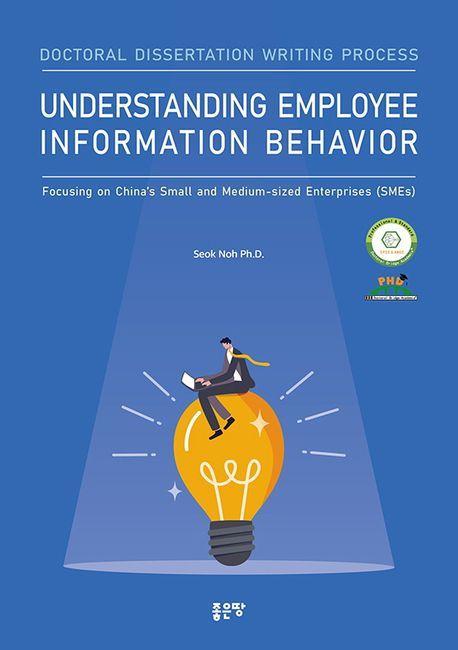시간의 가르침 또는 Understanding Employee Information Behavior
로즈
2024-09-23 12:09
345
0
본문
시간의 가르침

도서명 : 시간의 가르침
저자/출판사 : 이정재, 지식과감성
쪽수 : 112쪽
출판일 : 2024-05-20
ISBN : 9791139218626
정가 : 12000
인사 글
시간의 존재와 역할
기록 속의 진심
삶의 의미
기다림 속의 깨달음
나무가 되는 재능
나를 알아 가는 시간
포기 속에서의 기회
복된 시간
잡념(雜念)
기도(祈禱)
득실(得失)
선택(選擇)
의미(意味)
여유(餘裕)
노력(努力)
순리(順理)와 정직(正直)
어쩌면
내 자신의
자신의
성공한 것은
시간 속에 삶이란
글을 쓰고 난 후
끝인사
Understanding Employee Information Behavior

도서명 : Understanding Employee Information Behavior
저자/출판사 : Seok Noh, 좋은땅
쪽수 : 160쪽
출판일 : 2024-08-16
ISBN : 9791138834353
정가 : 20000
Chapter 1
I. Introduction
Chapter 2
II. Theoretical Review
2.1 Information, Knowledge, and Knowledge Sharing
2.2 Limitations of Knowledge Sharing
2.3 What is Information Contribution?
2.4 Influencing Factors of Information Contribution
2.4.1 Individual Factors
2.4.2 Organizational Factors
2.4.3 Technological Factors
2.5 Theoretical Development
2.5.1 Expectancy Theory
2.5.2 China’s Relationship Culture
2.5.3 Relationship Networks and Knowledge Sharing within Enterprises
2.5.4 Work Engagement and Information Contribution
Chapter 3
III. Research Model and Hypothesis Development
3.1 Research Model
3.2 Hypothesis Development
Chapter 4
IV. Research Methodology
4.1 Survey Introduction
4.2 Operational Definition and Structure Measures
4.2.1 Measurement of Performance Expectation
4.2.2 Measurement of Relationship Expectation
4.2.3 Measurement of Work Engagement
4.2.4 Measurement of Information Contribution Intention
4.2.5 Measurement of Information Contribution Behavior
Chapter 5
V. Data Analysis and Results
5.1 Survey Administration and Sampling
5.2 Data Analysis
5.2.1 Assessment of Reliability and Validity
5.2.2 Confirmatory Factor Analysis
5.2.3 Path Analysis
5.2.4 Mediating Effect Analysis
5.3 Hypotheses Testing Results
5.4 Independent T-Test Analysis
5.5 Multi-group Sample Structure Model Analysis
5.5.1 Analysis Results of Service Industry Group Model 1
5.5.2 Analysis Results of Non-service Industry Group Model 2
5.5.3 Comparative Analysis Results of Model 1 and Model 2
Chapter 6
VI. Conclusions
6.1 Conclusions
6.2 Discussions
6.3 Implications
6.4 Limitations
6.5 Future Research
Reference
Appendix A. China’s SMEs Introduction
Appendix B. Geographical Distribution of China’s SMEs Samples


댓글목록0